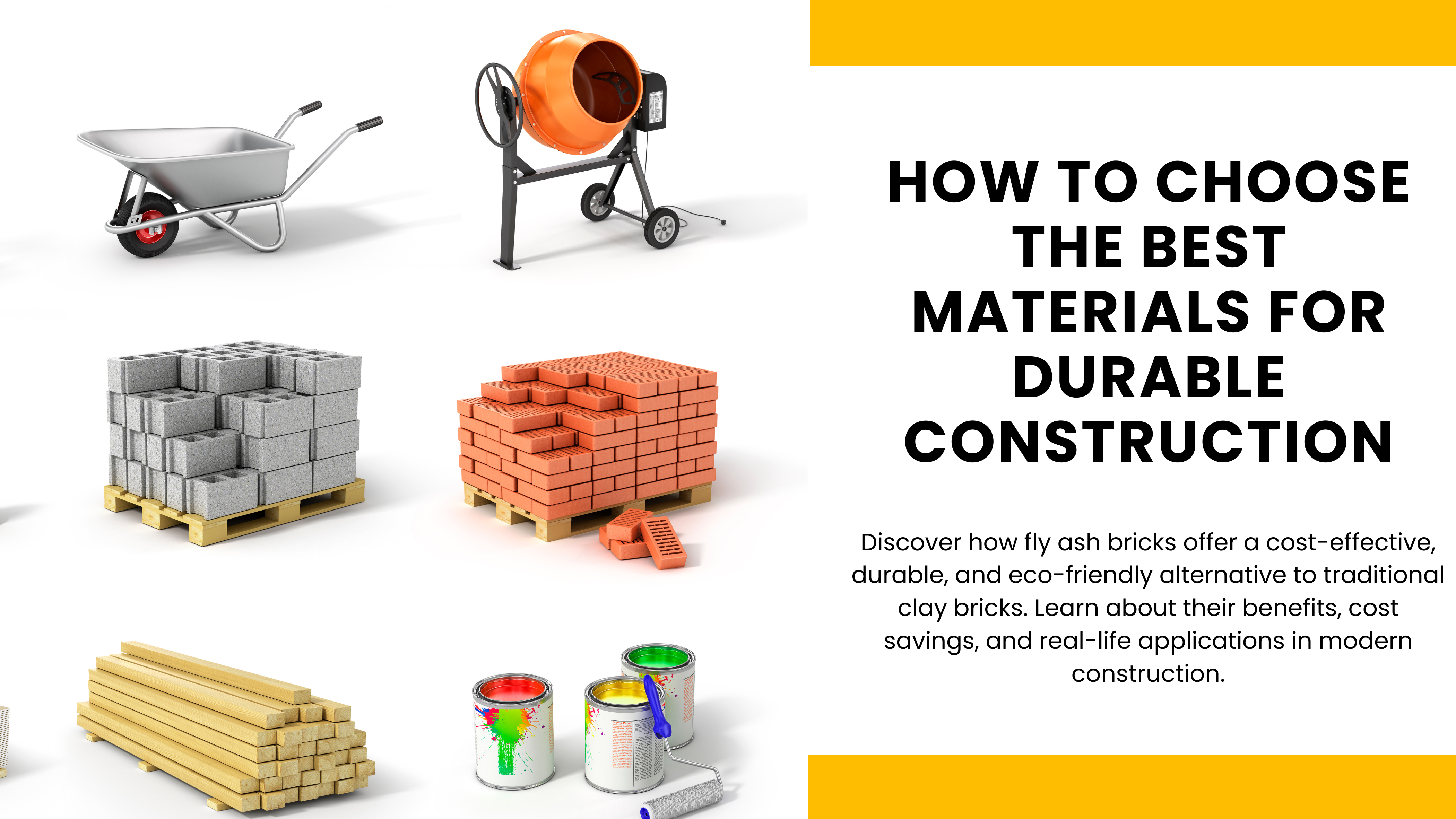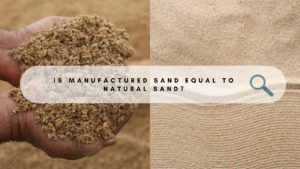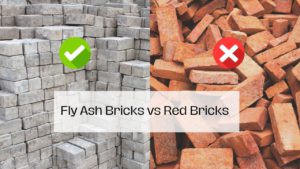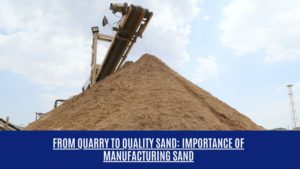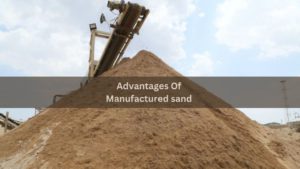Introduction
Selecting the right building materials is one of the most critical decisions in construction. Whether you’re building a residential home, commercial complex, or infrastructure project, the quality of materials directly impacts durability, safety, and cost-effectiveness.
Durable building materials ensure a strong foundation, reduce maintenance costs, and enhance the overall lifespan of a structure. Additionally, with the growing demand for sustainable building solutions, many developers are now prioritizing eco-friendly and energy-efficient construction materials.
In this guide, we will explore how to choose the best construction materials, focusing on factors such as strength, cost-effectiveness, sustainability, and weather resistance.
Understanding Different Types of Building Materials
Building materials can be broadly categorized based on their function and application. Here’s a breakdown of the key types:
1. Structural Materials
These materials provide the core strength of a building and include:
- Concrete: A mixture of cement, sand, and aggregates that forms the backbone of construction.
- Steel: Used for reinforcement, framing, and high-rise structures due to its tensile strength.
- Bricks: Traditional clay bricks and modern fly ash bricks are commonly used in walls and masonry.
2. Masonry Materials
- Fly Ash Bricks: A sustainable and cost-effective alternative to traditional clay bricks, offering higher strength and better insulation.
- Traditional Clay Bricks: While widely used, they have drawbacks like high water absorption and environmental concerns.
3. Finishing Materials
- Tiles & Paints: Used for interior and exterior surfaces to improve aesthetics and protection.
- Interlocking Paver Blocks: Ideal for driveways, pathways, and landscaping, offering both durability and style.
4. Aggregates & Fillers
- Crusher Stone Grit: A crucial ingredient for high-strength concrete mixes.
- Manufactured Sand (M-Sand): A superior alternative to river sand, providing better binding strength and consistency.
Each category plays a unique role in construction, and selecting the right combination ensures a sturdy and long-lasting structure.
Key Factors to Consider When Choosing Building Materials
Selecting high-quality building materials involves evaluating multiple factors:
1. Durability & Strength
Crusher stone grit and M-Sand provide robust structural integrity, making them essential for strong foundations and concrete mixes. Their superior binding properties enhance load-bearing capacity, ensuring long-lasting construction.
Concrete and steel reinforcement play a crucial role in providing structural strength. While concrete offers compressive strength, steel reinforcement improves tensile strength, preventing cracks and structural failures.
2. Cost-Effectiveness
Fly ash bricks offer high durability at a lower cost compared to conventional clay bricks, making them an ideal budget-friendly choice. Their efficient manufacturing process reduces material wastage, lowering overall production costs.
M-Sand (Manufactured Sand) is a cost-effective alternative to river sand. It provides better consistency and quality while being more affordable, helping builders reduce expenses without compromising on strength.
3. Sustainability & Eco-Friendliness
Fly ash bricks and M-Sand are considered green building solutions as they reduce reliance on natural resources like clay and river sand. Their production also minimizes industrial waste, making them an environmentally responsible choice.
Autoclaved Aerated Concrete (AAC) blocks are another eco-friendly alternative, as they require less energy to produce and provide excellent thermal insulation. This reduces the need for heating and cooling, lowering energy consumption in buildings.
4. Aesthetic Appeal
Interlocking paver blocks enhance outdoor spaces by providing a stylish and functional alternative to traditional concrete flooring. Available in various colors, shapes, and textures, they allow for creative designs that complement modern architecture.
Decorative wall cladding made from natural stone, wood, or textured concrete adds a sophisticated touch to interiors and exteriors. These materials enhance visual appeal while also offering durability and weather resistance.
5. Weather Resistance
Materials like M-Sand, paver blocks, and fly ash bricks are known for their ability to withstand harsh climates, ensuring long-term performance. They resist erosion, moisture absorption, and temperature fluctuations, making them ideal for various weather conditions.
Concrete with waterproofing additives enhances durability in regions with heavy rainfall. These additives prevent water seepage, reducing the risk of cracks and structural weakening due to prolonged exposure to moisture.
Choosing materials based on these factors improves the structural integrity, aesthetics, and sustainability of any construction project.
Best Building Materials for Different Construction Purposes
Choosing the right building materials is crucial for ensuring durability and efficiency in construction. The table below highlights the best materials for various construction purposes.
| Category | Material | Key Benefits |
|---|---|---|
| Foundation & Structural Strength | Crusher Stone Grit | Enhances compressive strength in concrete. |
| Foundation & Structural Strength | Manufactured Sand (M-Sand) | Superior alternative to river sand, offering better binding properties and water retention. |
| Walls & Masonry | Fly Ash Bricks | Eco-friendly, cost-effective, and highly durable, ideal for sustainable construction. |
| Outdoor & Landscaping | Interlocking Paver Blocks | Ideal for driveways, patios, and walkways, providing excellent strength and aesthetic appeal. |
Using the right materials for each application ensures a well-balanced and efficient construction process.
Traditional vs. Modern Building Materials
With advancements in construction, modern building materials have replaced traditional ones due to their higher efficiency and environmental benefits.
|
Material Comparison |
Traditional Materials | Modern Alternatives |
|
Sand for Concrete |
River Sand (Limited Supply) |
M-Sand (More Sustainable & Consistent) |
|
Bricks |
Traditional Clay Bricks |
Fly Ash Bricks (More Durable & Eco-Friendly) |
| Flooring | Concrete Flooring | Interlocking Paver Blocks (Aesthetic & Stronger) |
Modern materials like M-Sand, fly ash bricks, and interlocking pavers offer better quality, sustainability, and cost-effectiveness compared to traditional materials.
How to Source High-Quality Building Materials
Purchasing authentic and high-grade construction materials is essential for durability and safety. Here’s how to ensure quality:
1. Buy from Trusted Suppliers
Work with reputable vendors who provide certified and tested products like fly ash bricks, M-Sand, and crusher stone grit. Reliable suppliers ensure consistency in material quality and adhere to industry standards.
2. Check Certifications
Look for government-approved certifications that validate the quality, durability, and environmental safety of materials. Certified materials comply with construction norms and help avoid future structural issues.
3. Ensure Proper Material Testing
Conduct strength and durability tests for crusher stone grit and aggregates. Verify water absorption and compressive strength for fly ash bricks. Material testing guarantees reliability and prevents the use of substandard components.
4. Compare Prices and Quality
While affordability is important, avoid compromising on quality for cost savings. Compare different suppliers, request quotations, and assess the balance between price and durability. Opting for the cheapest materials may lead to frequent repairs and higher long-term expenses.
5. Inspect Materials Before Purchase
Physically inspecting materials before procurement helps in identifying defects such as cracks, uneven textures, or impurities. For example, M-Sand should have consistent granule size without excessive dust, while fly ash bricks should have a uniform shape and smooth surface to ensure proper bonding.
6. Consider Eco-Friendly Alternatives
Sustainable materials like AAC blocks, recycled aggregates, and low-carbon cement not only reduce environmental impact but also enhance energy efficiency in buildings. Choosing eco-friendly options can improve insulation, reduce construction waste, and contribute to green building certifications.
Conclusion
Choosing high-quality building materials is crucial for ensuring strength, durability, and cost-effectiveness in construction. Materials like crusher stone grit, M Sand, and fly ash bricks provide superior structural integrity while being eco-friendly. Interlocking paver blocks enhance outdoor spaces with both durability and aesthetic appeal.
To build long-lasting structures, it is important to source materials from reliable suppliers, check certifications, and opt for sustainable alternatives. Investing in the right materials not only ensures safety and reduces maintenance costs but also contributes to a greener and more sustainable future.
Selecting the best building materials is the key to constructing durable, cost-effective, and sustainable structures.
Looking for Reliable Building Materials?
Raj Mineral is your one-stop solution for premium fly ash bricks, M-Sand, interlocking paver blocks, and aggregates. Ensure durability and strength in your projects with our top-grade materials. Contact us today!
Also Read:- Why Builders Are Choosing Fly Ash Bricks for Sustainable and Cost-Effective Construction

